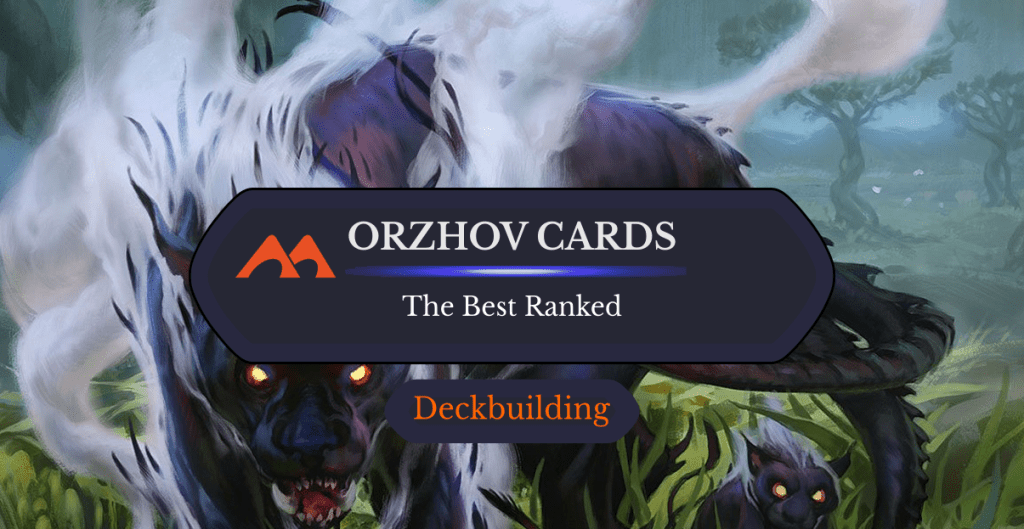
Lurrus of the Dream-Den | Illustration by Slawomir Maniak
You know that phrase “well, it’s not all just black and white”? Orzhov would like a word. This enemy color pair takes black’s “greatness, at any cost” mantra and stirs it together with white’s sense of order and nobility. It usually bears out in Magic as organized wrong-doing, evidenced by the Orzhov Syndicate on Ravnica taxing the dead, or the School of Silverquill’s strict and dominant demeanor on Strixhaven.
In gameplay, this translates to gain-and-drain type effects, abilities that bleed players out slowly, and versatile catch-all removal. There’s also a fair amount of reanimation in black-white, given that both individual colors excel at recursion on their own. There are over 300 Orzhov cards as of Wilds of Eldraine, but how many break into the highest tiers?
Let’s take a look!
What Are Orzhov Cards in MTG?

Vizkopa Guildmage | Illustration by Tyler Jacobson
Simply put, Orzhov cards have an exact color identity, and no other colors added. That means they either include some combination of black and/or white in their mana costs, or have black/white symbols represented in their rules text somewhere. Damn is an Orzhov card for the purposes of Commander deckbuilding, even though it’s considered a mono-colored card by the rules of the game.
With over 300 cards to choose from, I had to be a bit strict with the cards that make this list. I’m evaluating cards from the lens of how likely they are to be meaningful inclusions in your + Commander decks, with a few nods to Constructed when appropriate. This means I’m judging cards based on how they perform today, not how they’ve performed historically. You won’t see Vindicate or Mortify here because they’re just average at best in today’s deckbuilding climate.
Also, no lands or universal staples on the list like Marsh Flats or Orzhov Signet. Those are obviously auto-includes in most decks, but you don’t need me to rank them to tell you that you should be playing them.
#32. Liesa, Shroud of Dusk
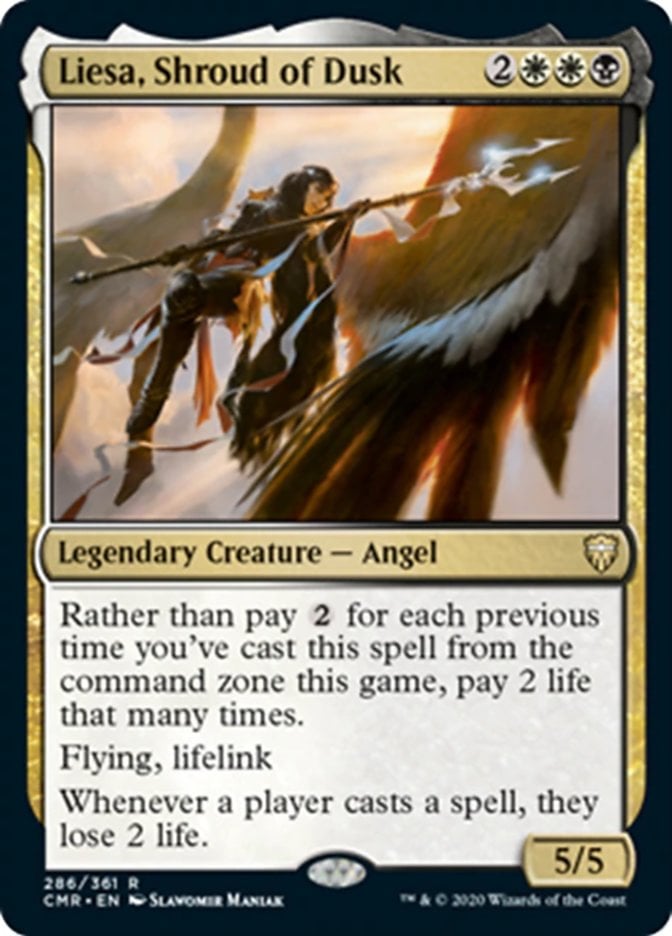
I actually didn’t include Liesa, Shroud of Dusk on my original list, but after digging deep and researching the most popular Orzhov commanders, it became apparent that Liesa version 1.0 is nearing the top. And it’s not hard to see why. You can build this as a stax commander, a lifegain deck, or even an angel typal deck, and commanders that cheat on commander tax tend to be quite popular.
#31. Lingering Souls

Lingering Souls is great value on one card, though the Commander decks that want this are limited. King of the Oathbreakers or any deck that cares about tokens can make good use of it. It’s fallen out of favor in Constructed, where it used to be a key part of Modern, both combating against and synergizing with Liliana of the Veil, another card past its prime.
#30. Merciless Eviction
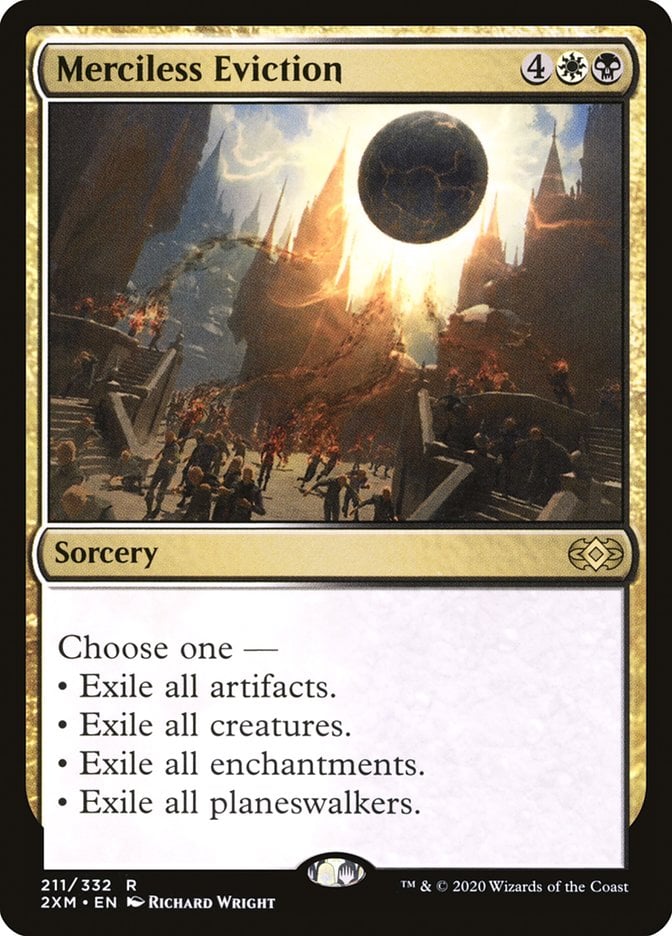
Merciless Eviction is a solid board wipe in the unfortunate position of co-existing with Farewell, a card that accomplishes most of the same goals in a more effective manner while slotting into more decks. I still want to show Eviction some love, because sometimes you just want the next best thing. It’s a literal quarter to Farewell’s $10 price tag, and it has functionality against planeswalkers that Farewell doesn’t.
#29. Vizkopa Guildmage
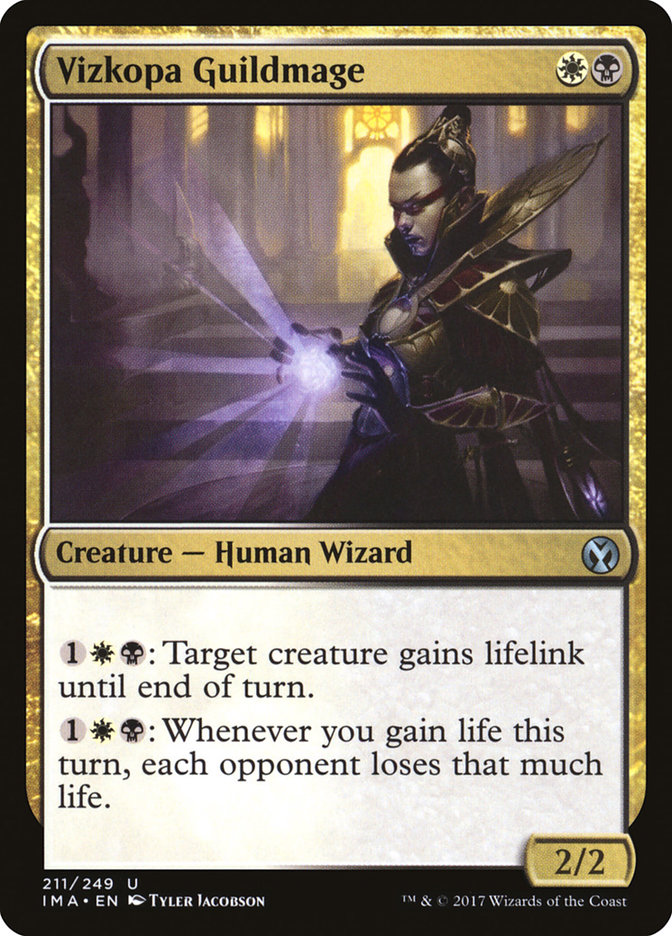
I feel like Vizkopa Guildmage used to be a bread-and-butter combo card in Commander, but I haven’t seen it in quite some time. Exquisite Blood and Revival // Revenge were some of its most obvious friends, though I always considered it a solid playable at minimum when it wasn’t outright winning games.
#28. Brimaz, Blight of Oreskos

I tried not to include too many hyper-specific commanders, which is why you won’t see creatures like Eriette of the Charmed Apple and Commissar Severina Raine despite those being fairly strong in their respective decks. Brimaz, Blight of Oreskos looks like it fits in the same category, though it’s more of a self-contained engine in an artifact-heavy deck than a full-on Phyrexian commander.
The card is quite powerful, creating its own army of Incubators and proliferating to grow them and your other threats. You can push for more Phyrexian interaction here, but the artifact route is better supported and more generically powerful.
#27. Despark

Despark is one of Orzhov’s most useful single-target removal spells. It’s conditional, but the subset of targets it hits are usually the ones you care about most, and it’ll always trade up on mana when you cast it. 1-for-1 removal can only be so good, and this loses value in metas where players are optimizing towards cheaper, more efficient permanents.
#26. Unburial Rites
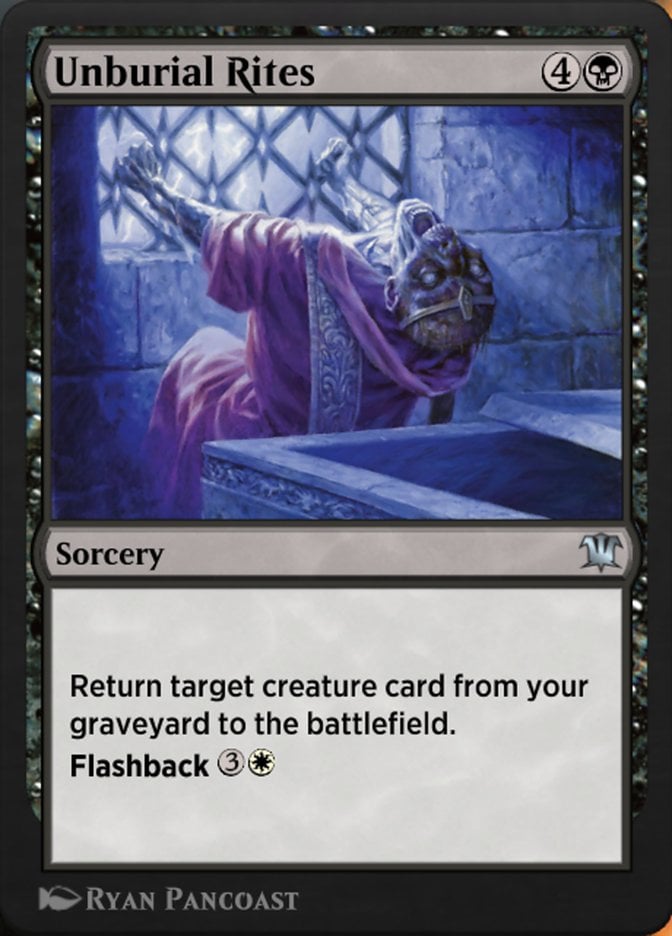
White’s great at small-creature recursion, and black’s the king of reanimation, so it makes sense that you’d see some powerful reanimation effects when you combine the two. Unburial Rites is your run-of-the-mill expensive reanimation effect, but flashback is a game-changer. That gives you a second bite at the apple and gives you access to a reanimation spell if it happens to be discarded or milled over.
#25. Assault Intercessor

Half a Massacre Wurm for half the price. Assault Intercessor can take huge chunks out of opposing life totals when combined with the right cards, whether that’s dedicated board wipes, a flurry of targeted removal, or just straight-up actual Massacre Wurm.
#24. Ravos, Soultender
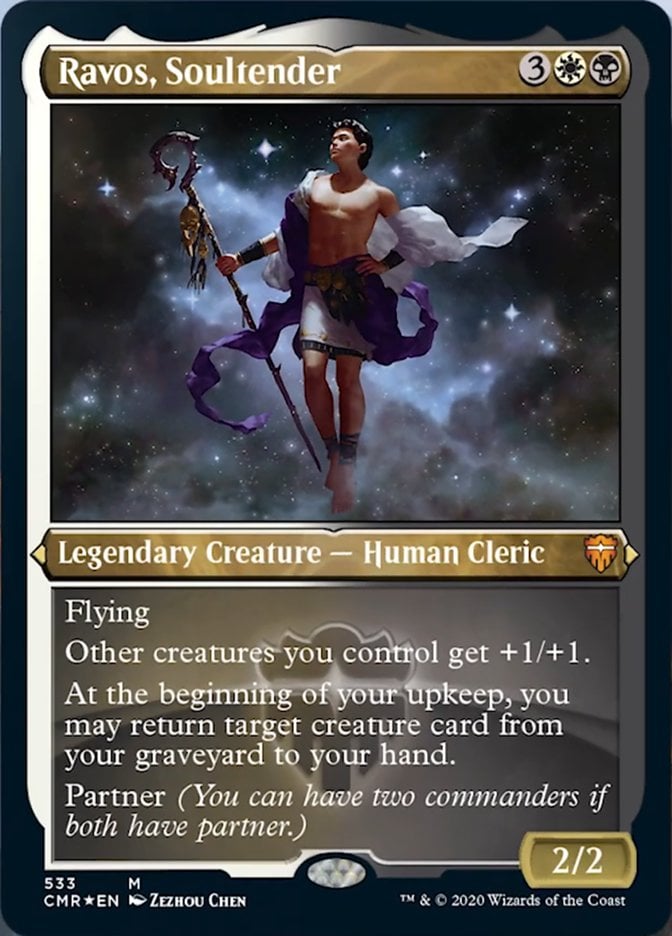
I consider Ravos, Soultender slow by today’s standards, but I’m rarely leaving one of the original partner creatures off a list like this. Partner just opens up so many deckbuilding opportunities and combinations, and simply having two commanders gives you various edges, even if the individual card isn’t anything amazing. An unopposed Ravos is a fine value creature, but it’s miles behind the other partner commander occupying the same colors.
#23. Breena, the Demagogue
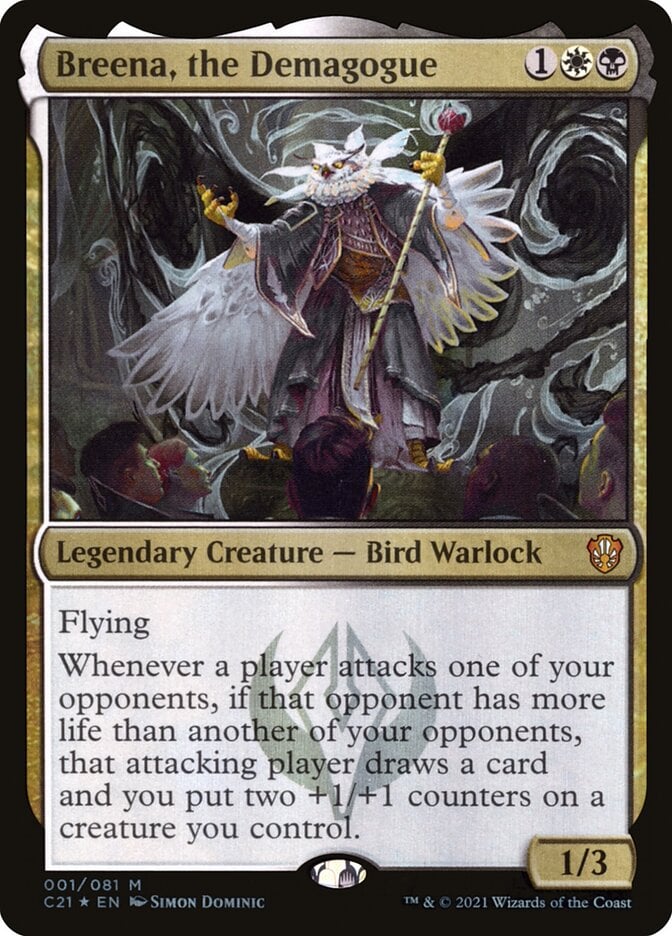
Breena, the Demagogue is an innocuous threat that promises card draw to the table then suddenly becomes an 11/13 flier after a few combat steps. It’s usually best as the commander or in the 99 of a political-style deck, but the card plays out unexpectedly well in my experience. It gets a huge knock for essentially losing its ability in any 1v1 situation.
#22. Drana and Linvala
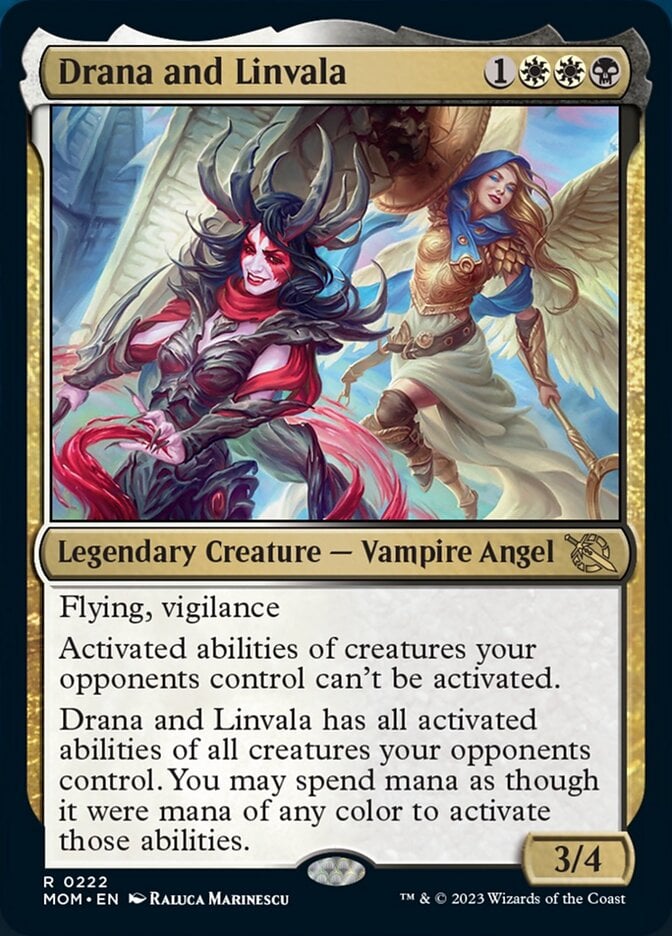
I’m not actually confident about where to place this tag team, or if it should be on the list at all. I’m assuming Drana and Linvala has a place in cEDH, though my lawyers won’t really let me talk about that format. I recognize Linvala, Keeper of Silence as a great stax creature, so I’m assuming adding a color and some extra abilities makes it better, or at least comparable. I’m adding it out of due diligence, though perhaps you can tell me in the comments where it actually stands (or flies).
#21. Athreos, God of Passage
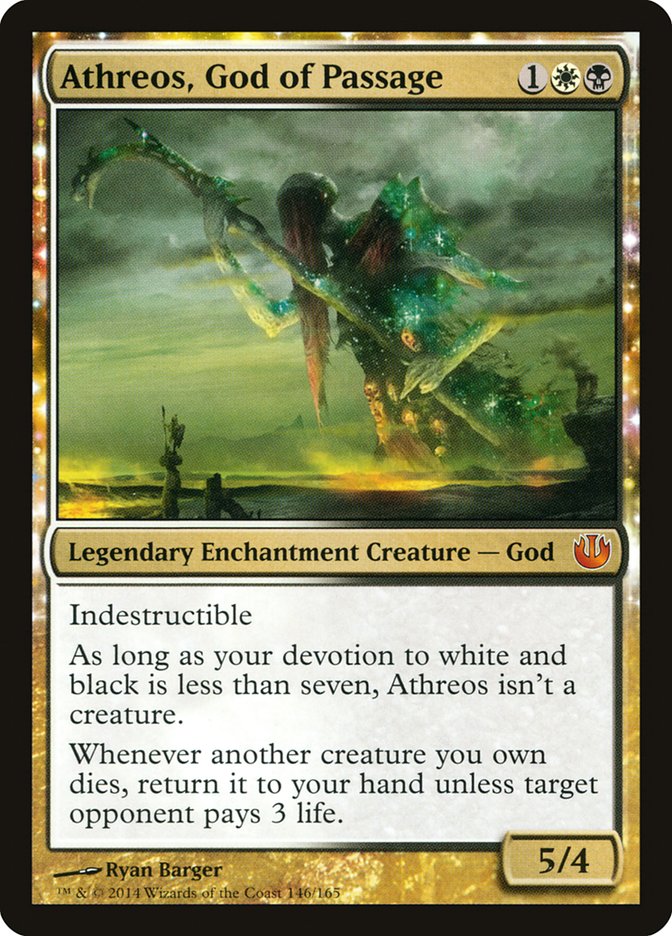
Athreos, God of Passage can make its way into almost any creature deck without much justification. It’s a way to get extra damage out of your creatures or simply keep looping them, and it severely punishes anyone who was foolish enough to let their life total drop too low. It embodies the spirit of Orzhov perfectly, making personal gains out of your opponents’ suffering.
#20. Ethereal Absolution

This is a pet card of mine that I’ve found usually overperforms my expectations. Think of Ethereal Absolution like a mini Elesh Norn, Grand Cenobite that creates bodies, chews up graveyards, and doesn’t die to creature removal. You can’t throw too many 6-drops in your average deck, but I urge you to try this one out if you haven’t already.
#19. Greasefang, Okiba Boss

Here’s the odd entry on a mostly Commander-focused list going to Pioneer/Explorer mega-hit, Greasefang, Okiba Boss. Greasefang has been piloting its own Constructed combo decks since its printing, using Parhelion II as its primary ride. Maybe we’ll look back in a few years and Greasefang’s either banned or non-competitive, but here and now it’s still got plenty of fuel in the tank.
#18. Ashen Rider

Ashen Rider was a riff on Angel of Despair, which was itself a relevant Constructed card many moons ago. Ashen Rider improved on its inspiration, removing a permanent on the way in and out. It’s a tier-2 reanimator card and sees healthy play in Commander reanimator deck. Hilariously, it used to see play in the sideboards of mono-red Legacy goblin decks as a “gotcha!” card against Show and Tells trying to cheat in Emrakul, the Aeons Torn.
#17. Priest of Fell Rites
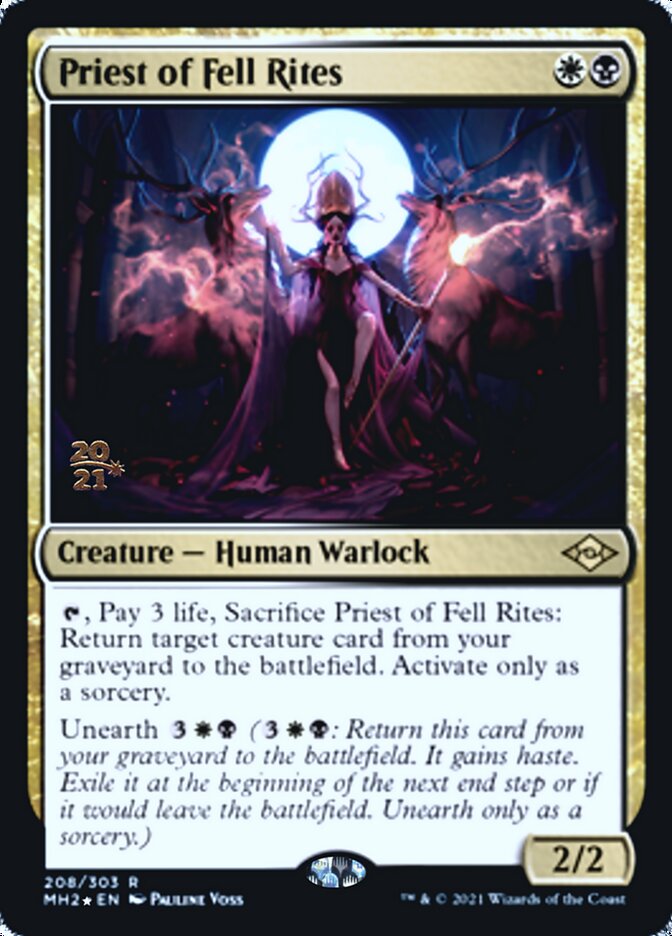
Telegraphed reanimation, but sometimes your opponents can’t do much about it even with your plan face-up on the table. Priest of Fell Rites double-dips on reanimation like Unburial Rites, but it has all the benefits (and drawbacks) of being a creature itself. It’s not 100% reliable, but also provides an early reanimation effect for a potentially explosive start to a game.
#16. Kambal, Consul of Allocation

I’ve always admired just how effective Kambal, Consul of Allocation is relative to just how simple of a textbox it has. It sits in that tier just ever-so-slightly below “kill-on-sight” where it gets to fade being a priority removal target, and yet constantly triggers throughout the game. It’s also a definitive stop sign against anyone sitting at low life or spellslinger decks looking to storm off.
#15. Blot Out the Sky

Blot Out the Sky is a nice way to put a bunch of pressure on board via flying token creatures and a fine place to sink 8+ mana to mass-disenchant the board. It even takes out planeswalkers when X is 6 or more. The tokens it generates are tapped, so it’s not the best defensive option, but a sky full of 2/1 fliers can do some damage when you untap.
#14. Debt to the Deathless
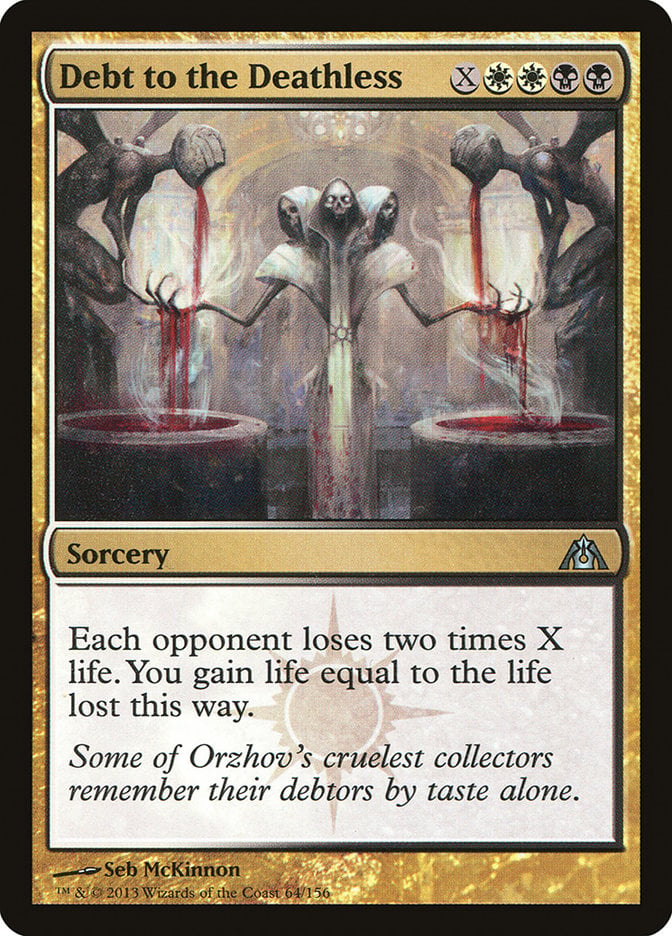
Debt to the Deathless might be the card that’s actually ended games the most when cast. It takes a hit from the existence of Torment of Hailfire and Exsanguinate, cards with the same potential ceiling but only requiring one color. Still, Debt’s an exceptional place to sink your Cabal Coffers mana, and even if you don’t win on the spot, you’ve probably got a life buffer to keep you safe for turns to come.
#13. Rite of Oblivion

I firmly believe Rite of Oblivion is ’s best single-target removal spell. Yes, even above instants like Despark, Anguished Unmaking, and Utter End. Look, Commander’s a lot leaner, faster, and more efficient than it used to be. A 3-4 mana 1-for-1 removal spell just isn’t that exciting, whether it’s unconditional, instant, or whatever. I want my answers to be cheap, and Rite fits the bill, while having flashback to do it again. Obviously, you need some fodder, but what deck doesn’t have a spare Clue or Treasure floating around these days?
#12. Elenda, the Dusk Rose
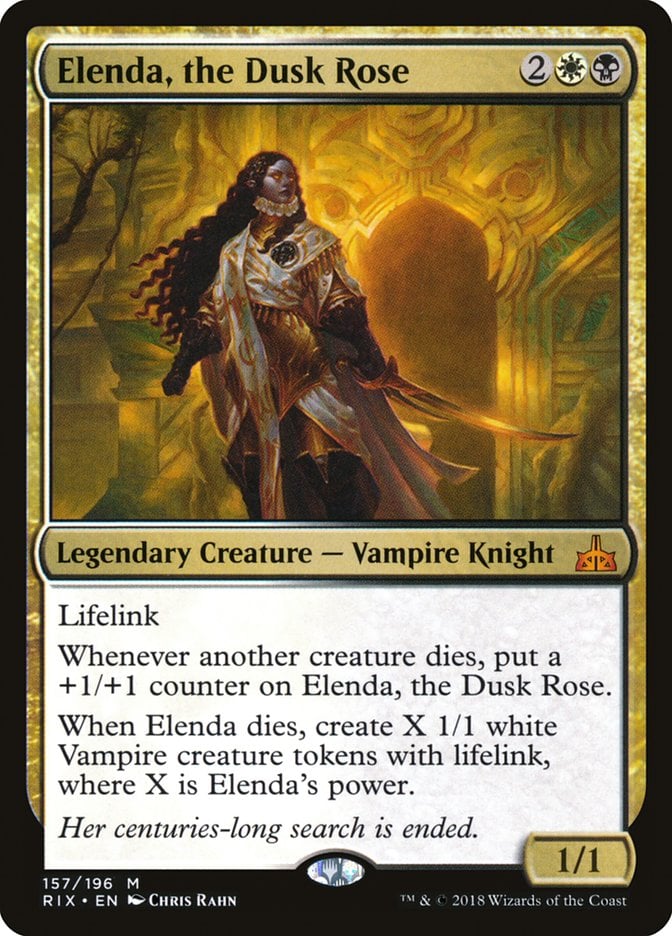
Elenda, the Dusk Rose is a potent legend, whether as the commander of a deck or in the 99 of an aristocrats or vampire shell. It builds up counters quickly, provide a substantial lifelinking threat on board, then punish opponents for dealing with them by splitting off into an army of lifelinking 1/1s. It’s like trying to crush a spider with an egg sac. You might take out the target, but those baby spiders are coming to getcha. Is the visual necessary? No, but I was thinking about it and now so are you.
#11. Elas il-Kor, Sadistic Pilgrim

Blood Artist in the command zone. That’s all I’ve got to say on Elas il-Kor, Sadistic Pilgrim.
#10. Damn

Excuse my language. Damn cleverly uses the overload mechanic to construct a strictly better Wrath of God, though one with more color restriction on the decks it can be included in. Allowing your wrath effect to double up as a single-target removal spell is great design, making this a damn fine piece of interaction.
#9. Inkshield
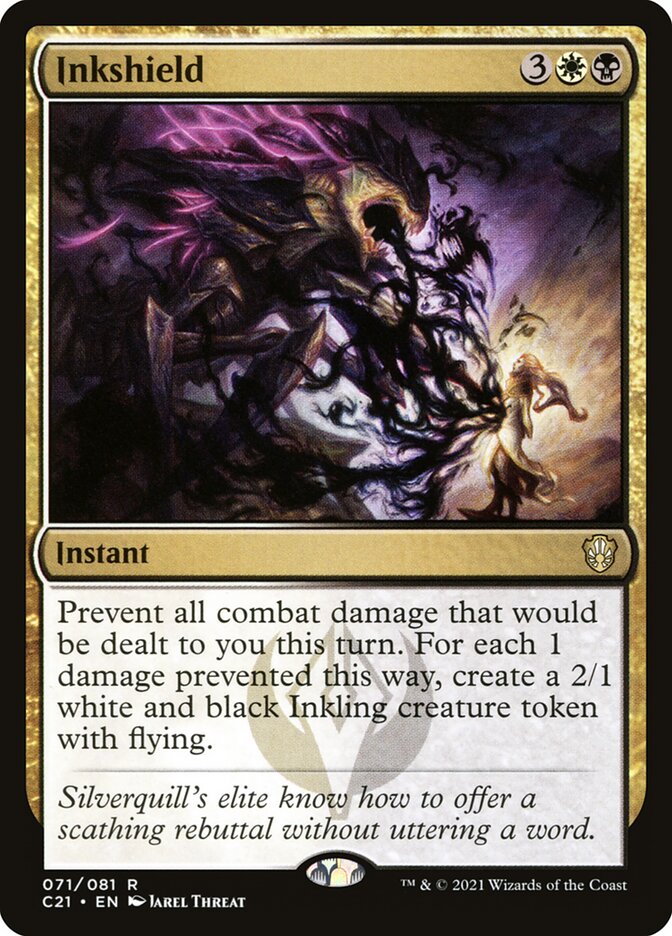
This one’s for you, Mr. Menery. Inkshield is a purely defensive card, but one that can take you from the cusp of dying to actually winning the game in the next turn cycle. It’s the type of trick that catches players off guard and doesn’t give them much time to adjust, though if you’re part of a regular playgroup they’ll start to suspect you have this any time you pass the turn with 5+ mana up.
#8. Teysa Karlov
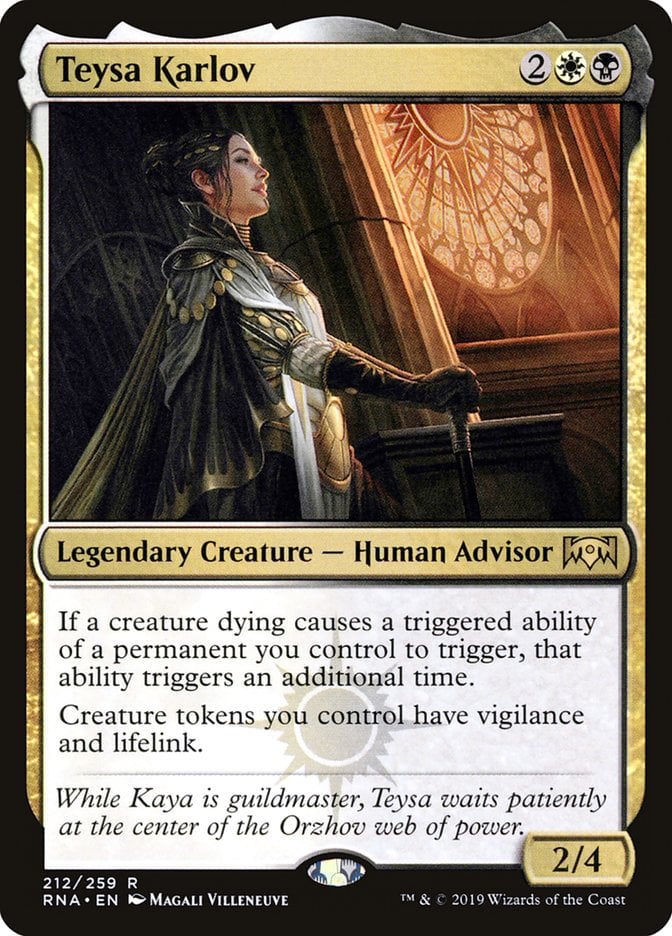
Teysa Karlov is one of Orzhov’s most popular commanders, doubling up on any of your death triggers, no matter which player caused them to trigger. That makes it an ideal aristocrats commander, though the extra token text comes in handy as well. This ability made a second appearance on Drivnod, Carnage Dominus, which is a great addition to a Teysa deck but a worse stand-alone commander.
#7. Ratadrabik of Urborg
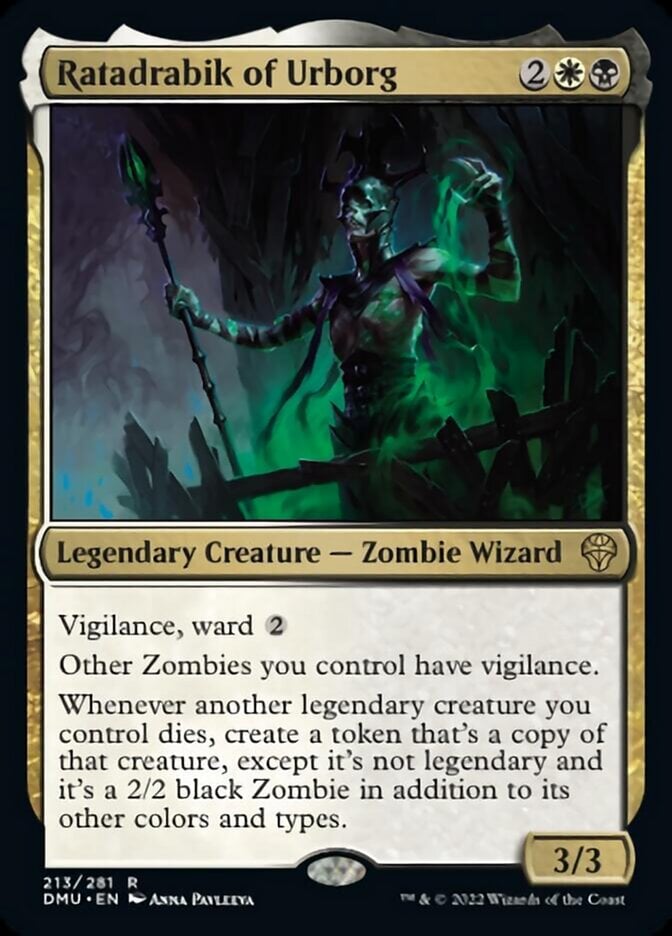
Ratadrabik of Urborg is Wizards going off the deep end of token creation. The tokens it produces lose legendary status and change their types and stat lines altogether, which can make tracking this ability in paper a pain. The logistics are annoying, but the power output is high, and there are plenty of well-known infinite combos that feed off Ratadrabik’s legend-copying ability.
#6. Corpse Knight
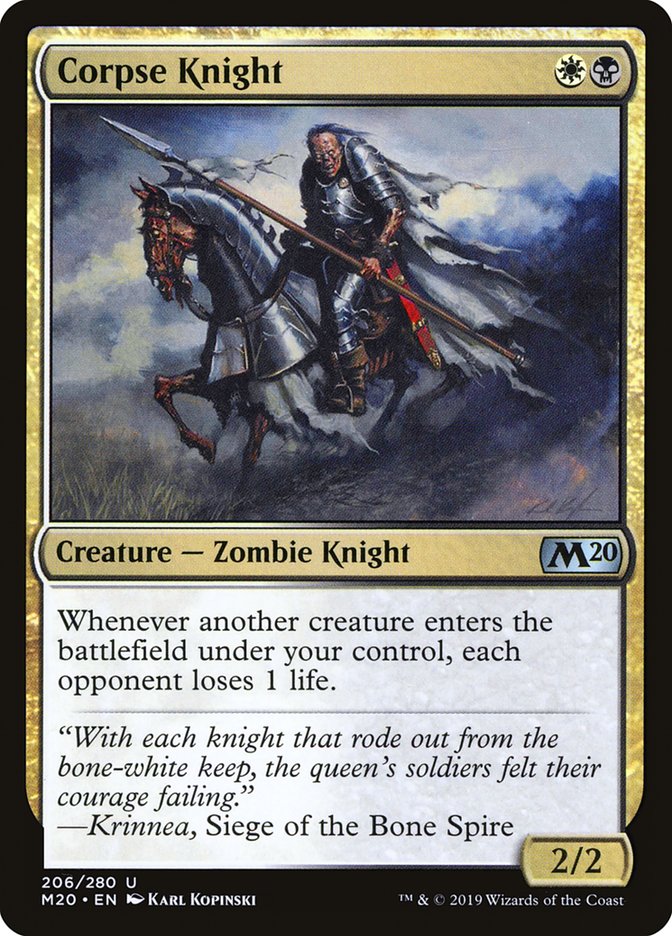
Am I crazy for ranking Corpse Knight so high? I don’t think so, but I could see a case for bumping it down the ladder a few steps. My experience is that Corpse Knight just eats through so much of my opponents’ life totals on a regular basis while having two highly relevant creature types. Raw simplicity and efficiency on a 2-drop; that’s hard for me to rank too low. Sorry, I’m not awarding any extra points to the misprinted 2/3 version.
#5. Lotho, Corrupt Shirriff

I’ve heard musings in the community that Lotho, Corrupt Shirriff has been putting up results, especially in the cEDH crowd. I believe that whole-heartedly, and I have to imagine having this sitting in play as early as turn 2 is going to net you plenty of extra mana in a game. Of course, people hyped up Monologue Tax when it came out, and that card’s a bit of a dud. Still, there’s a big difference between a 2-drop legend with that effect versus a 3-drop enchantment.
Lotho’s what I like to consider a “Mom” card, a reference to Mother of Runes. This is the type of card that might look like it’s not doing anything because it’s not triggering, but it might not be triggering because it’s actively disincentivizing opponents from doing something else. In a sense, it might be preventing opponents from curving out or double-spelling, which is a huge advantage, just not a tangible one you can always track.
#4. Kaya’s Guile

It’s not the best, but in my opinion Kaya's Guile the quintessential Orzhov card. It has beneficial modes for you and detrimental effects for your opponents, it plays to different aspects of the game, messing with the battlefield, graveyards, and life totals, and it does all of this at instant speed. It’s a personal favorite that’s basically never bad, and it’s sometimes absolutely game-warping.
#3. Primevals’ Glorious Rebirth

Primevals' Glorious Rebirth is a potent mass-reanimation effect that fits many different deck styles based solely on the sheer number of legendary cards that exist in Magic now. It picks up all your legendary creatures and planeswalkers, but even random artifacts, lands, and anything else with legendary tacked onto its type line. This is what I prefer a big splashy 7-mana spell to look like, and I’ve seen it end enough games to comfortably slot it in the top 3 here.
#2. Tymna the Weaver
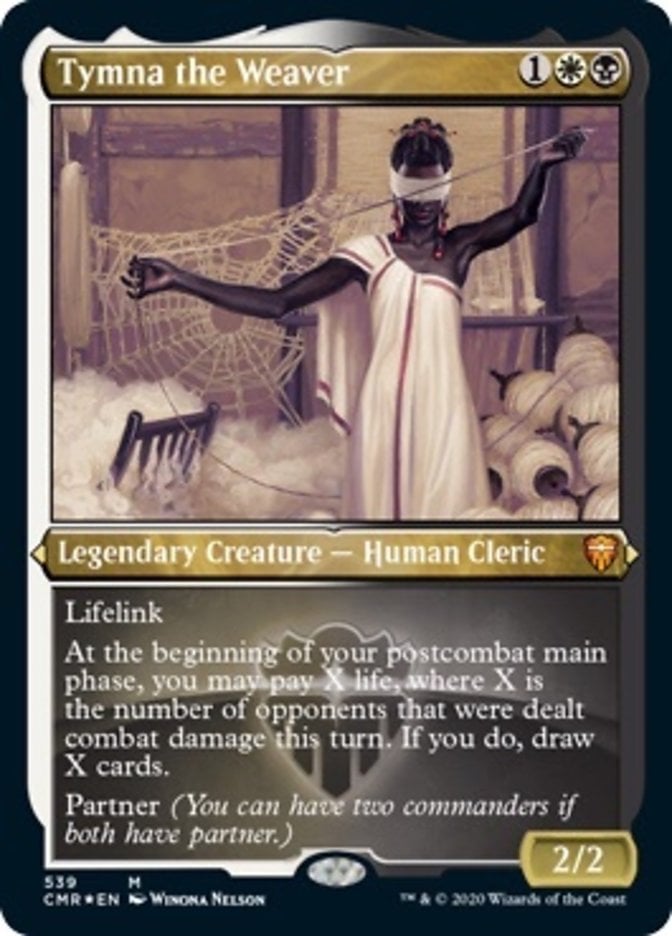
This might take the top spot if I were strictly talking about cEDH, but I believe the #1 pick has more wide-reaching application. Tymna the Weaver is one of the original partners, the original “mistakes,” if you will. It adds two colors to your deck while giving you a completely generic, easy-to-trigger form of card advantage in the command zone. And that’s something that any deck can get behind, not just cEDH decks. It’s excellent and simple, though maybe a bit too flexible, as we’ve seen with the 2-color partners.
#1. Lurrus of the Dream-Den
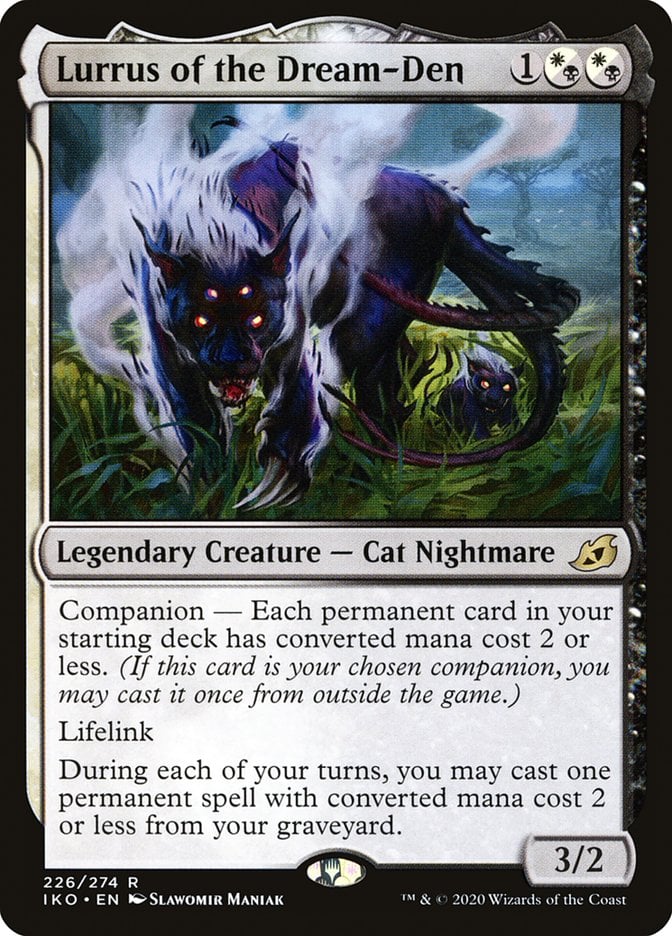
Oh companion, what went wrong? Now to be fair, I actually find companions like Lurrus of the Dream-Den extremely fun in Limited, Cube, and even Commander, but their impact on Constructed formats is one for the history books. Lurrus is one of the biggest offenders, taking a streamlined deck full of good cards and giving the deck an eighth card in its starting hand that lets you replay them from the graveyard. The extremes include everything from Black Lotus to Mishra's Bauble, and even in Commander Lurrus can recur some highly effective, cheap permanents.
Best Orzhov Card Payoffs
Level-1 Orzhov payoffs include cards that specifically call out black and/or white cards, things like Deathbringer Liege and Teysa, Orzhov Scion or devotion cards like Athreos, God of Passage and Gray Merchant of Asphodel.
The next step is to think about where black and white overlap with one another, and capitalize on that. For example, black and white are both recursion colors, so reanimator is an inevitable strategy to encounter. You end up with great recursion like Primevals' Glorious Rebirth, Unburial Rites, and Priest of Fell Rites, plus the best reanimation targets mana can buy.
Black and white often come together in a “drain and gain” package, where your life total increases as your opponents’ decrease. You can lean into this with a lifegain commander like Ayli, Eternal Pilgrim or Karlov of the Ghost Council, and you can amplify your opponents’ life loss with effects like Wound Reflection and Warlock Class.
These are also heavy removal colors, whether that’s in the form of single-target removal like Utter End and Vindicate, or full-on wraths like Damnation, Wrath of God, or gold sweepers like Kaya's Wrath and Exterminatus. It’s very possible to build wrath-centric decks full of resilient threats, though it’s not exactly the most fun or well-received strategy out there.
Aristocrats is at its best in the color spectrum, with black providing the best sacrifice effects and payoffs, and white providing the token generation and creature fodder needed for the strategy. Commanders like Teysa Karlov, Elas il-Kor, Sadistic Pilgrim, and Elenda, the Dusk Rose thrive in this archetype.
What Is Orzhov Good At in MTG?
White and black actually complement each other quite well considering they’re supposed to be enemy colors. Black doesn’t typically get the ability to destroy artifacts, but white does. White doesn’t get many mana-generation effects, but black has plenty. Black frequently pays life for its best effects, while white gains life.
Here are some of the areas where Orzhov excels:
- Gain-and-drain effects: gaining life white lowering opposing life totals.
- Sacrifice archetypes: combining black sacrifice effects/payoffs with white token generation.
- Board control: Black and white are both wrath colors, and there are numerous potent 1-for-1 removal spells in the color.
- Recursion/Mass reanimation: Both colors can recur permanents from the graveyard, either one at a time or all at once.
- Groupslug strategies: Black and white have plenty of light stax effects to tax your opponents’ actions. Cards like Kambal, Consul of Allocation and Liesa, Shroud of Dusk.
- Typal decks: is one of the more common homes for clerics, vampires, spirits, angels, and knights.
Fade to Black (and White)
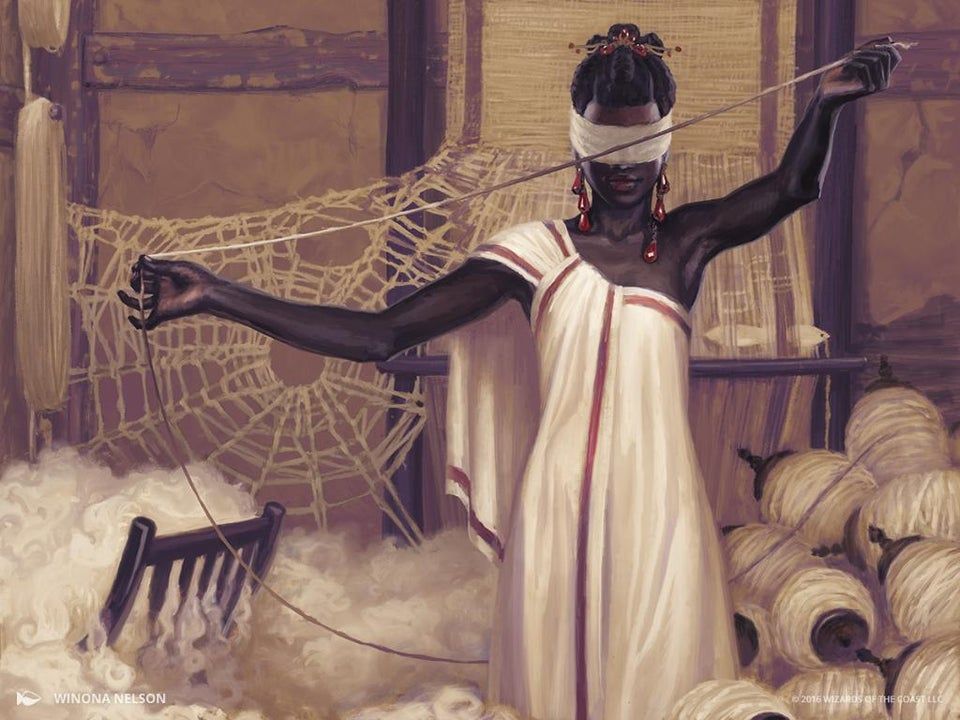
Tymna the Weaver | Illustration by Winona Nelson
Orzhov’s a complex color with plenty of flexibility in the cards it provides and the strategies it makes possible. It’s not nearly as binary as something like Gruul but not quite as intricate as some of the blue-based spellslinger or control decks. Still, there’s a wide variety of archetypes in existence, some of which are well-supported, and some a bit more niche. If you’re the type of player who likes having an answer for anything, or someone who’s patient and willing to build up towards a powerful finisher, give an Orzhov deck a try.
Now’s your time to tell me what I missed. Am I leaving off a highly important Orzhov card that you believe deserves a spot on the list? Or am I giving too much credit to something I included? Let me know in the comments below or over in the Draftsim Discord.
Thank you for making Draftsim your #1 stop for all things Magic!
Follow Draftsim for awesome articles and set updates: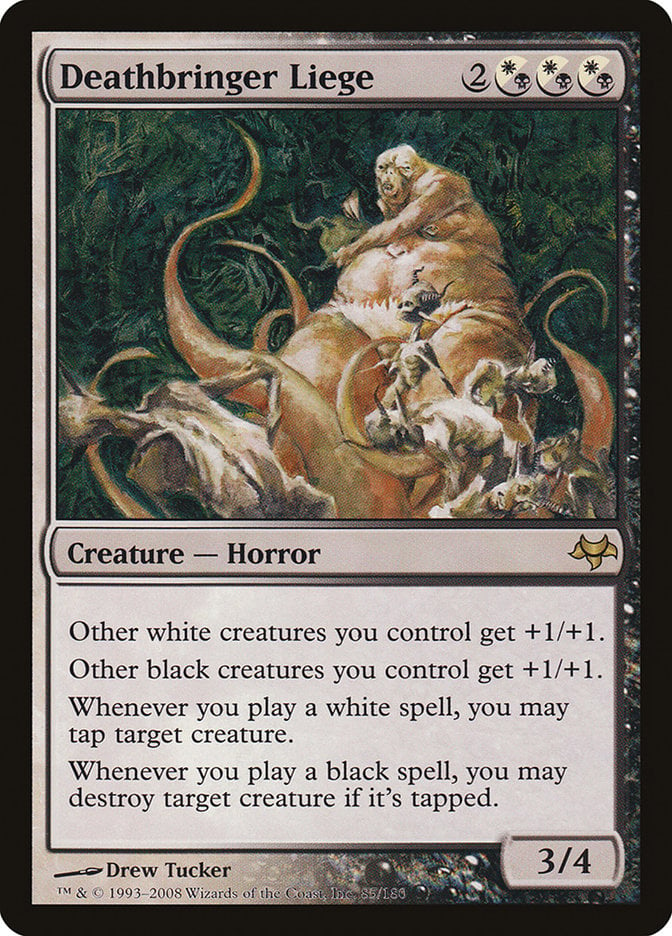
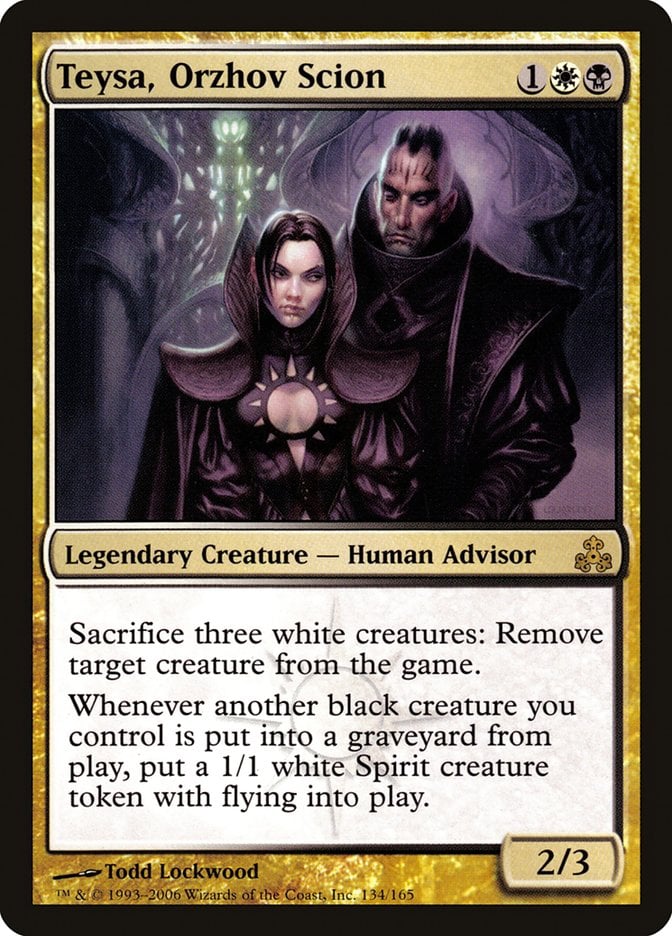
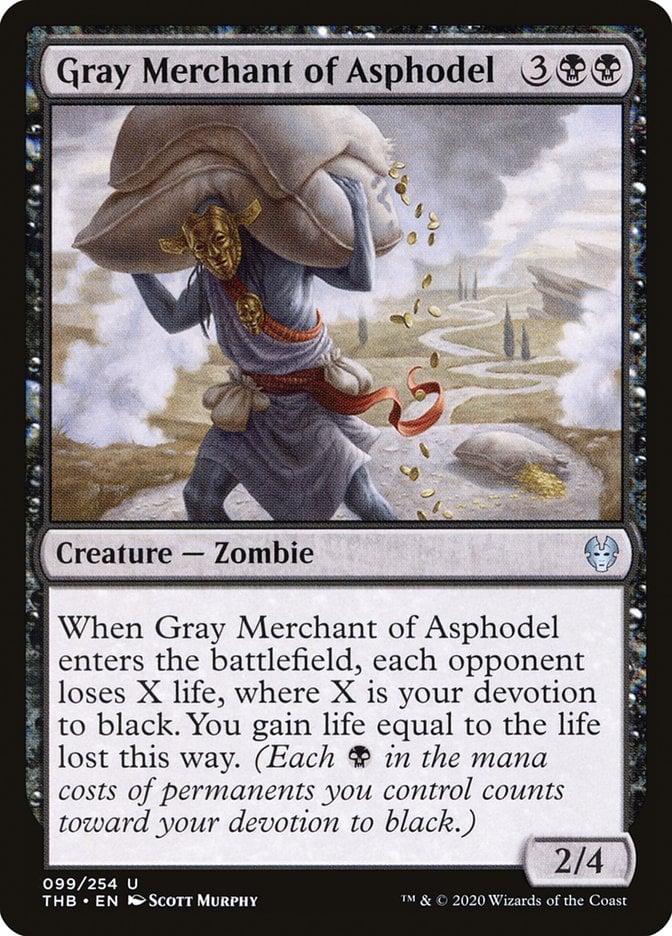
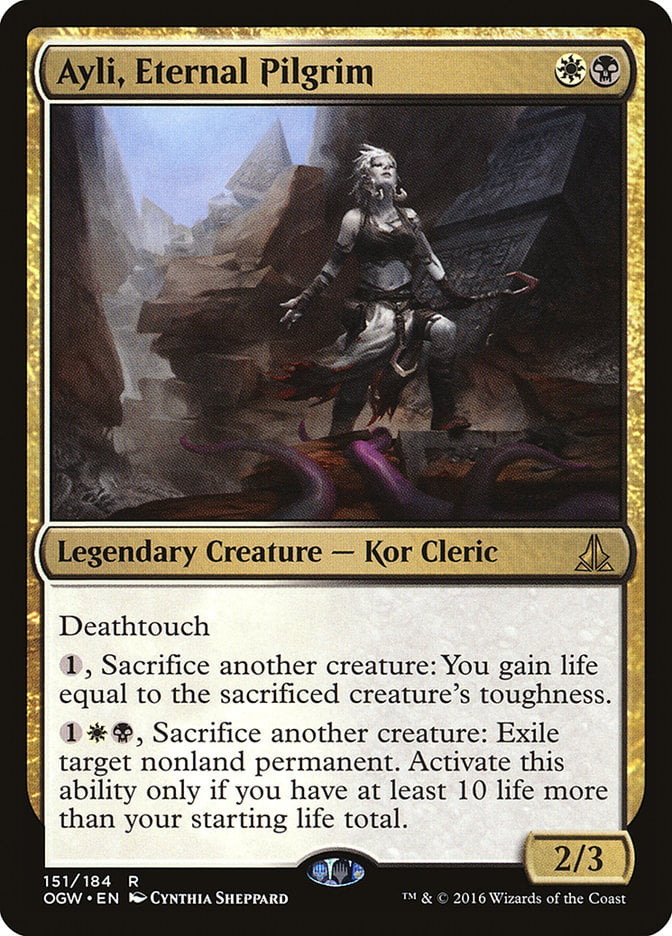
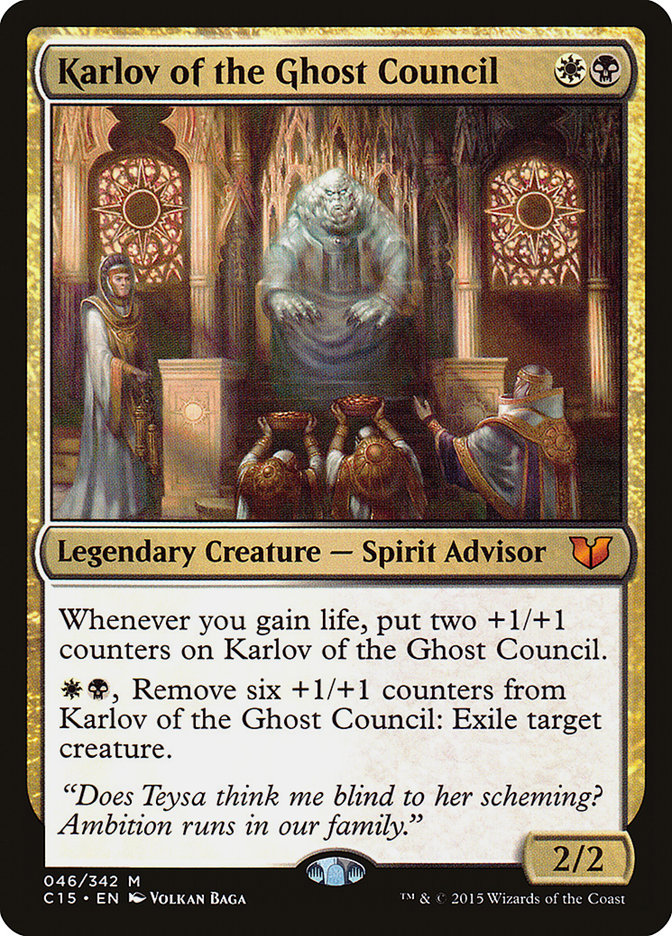
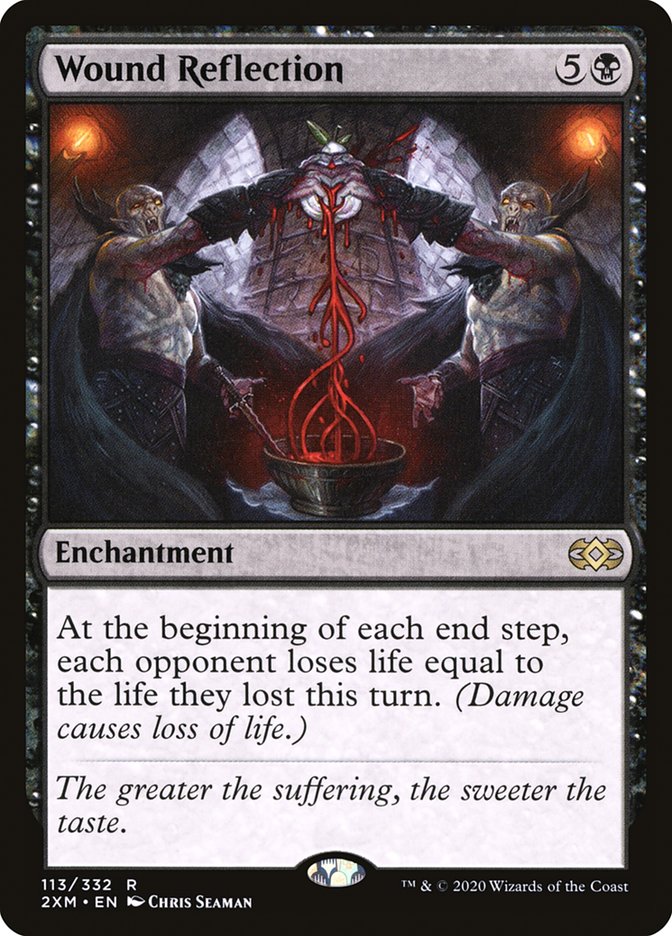


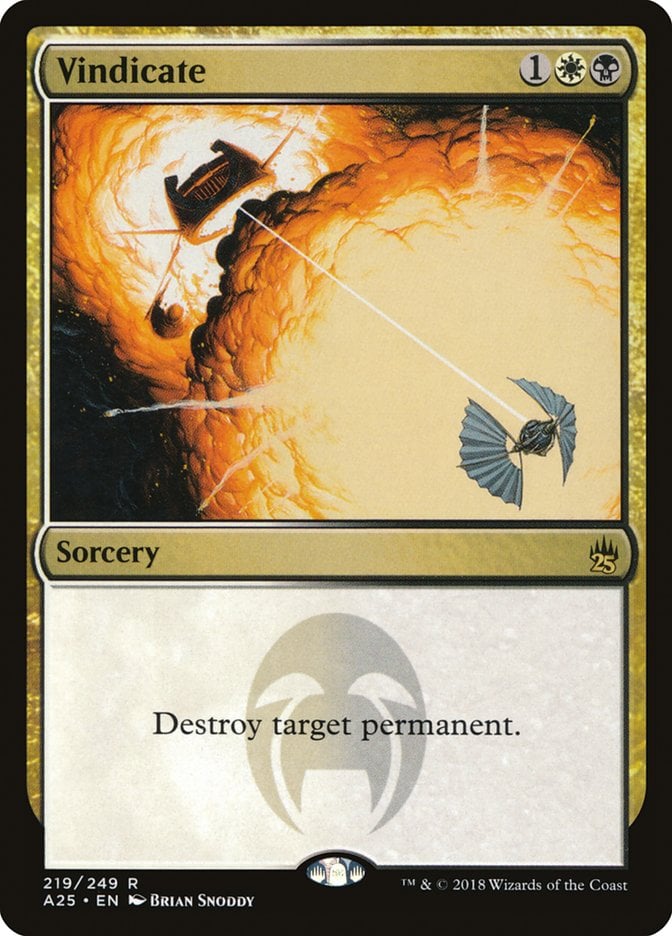

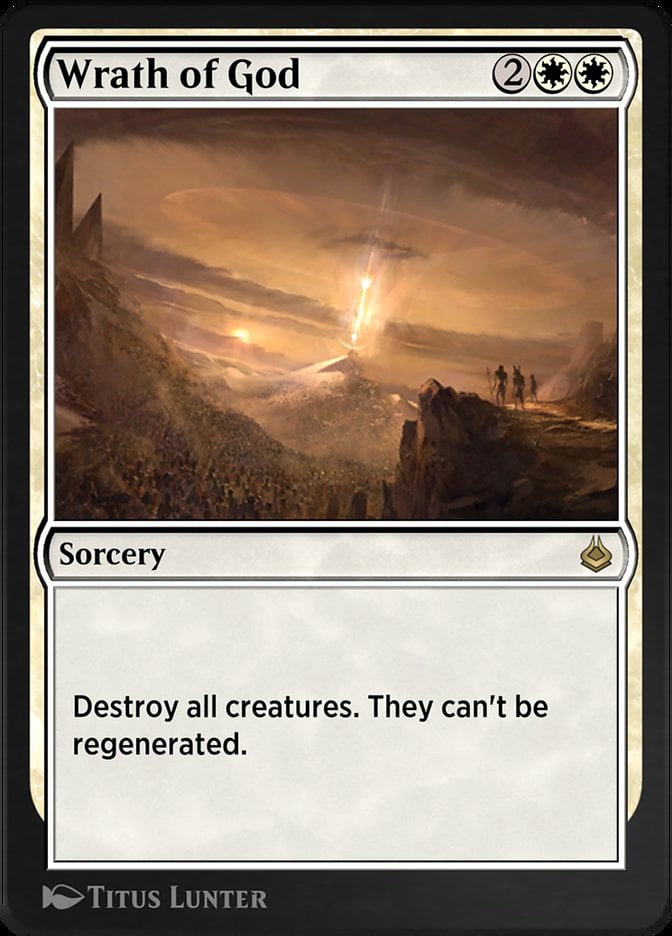
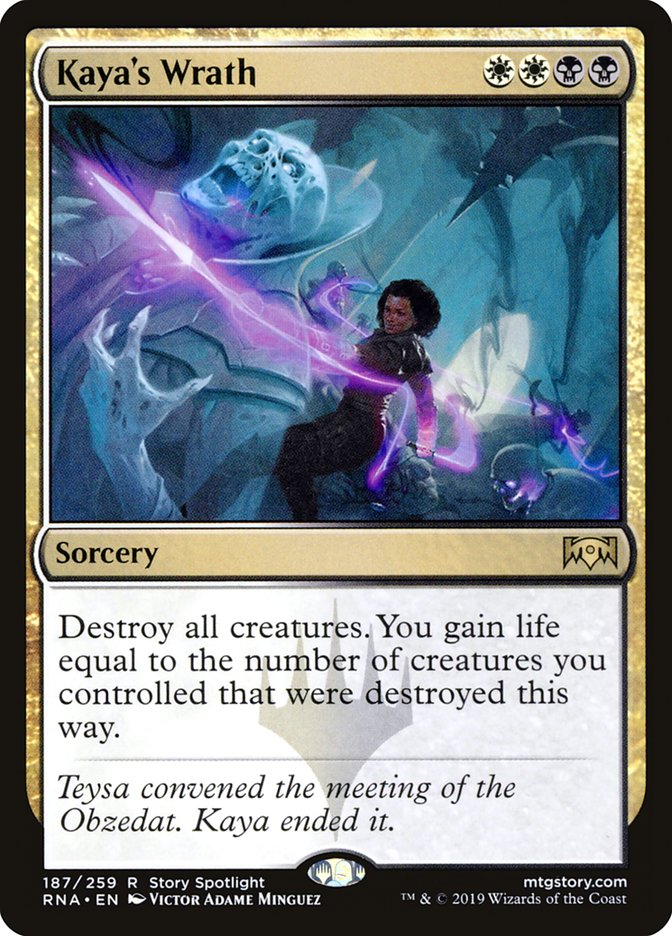
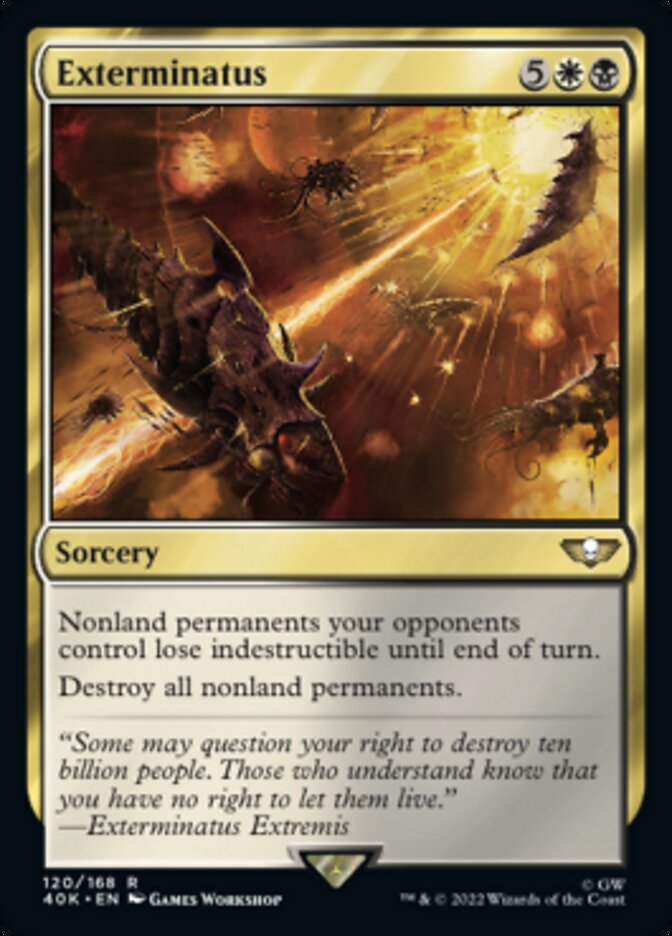
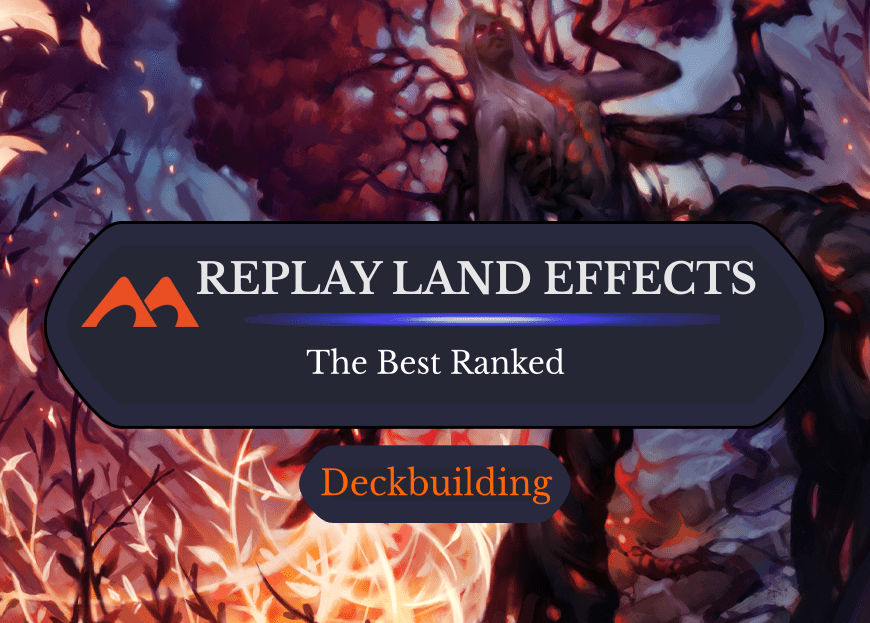
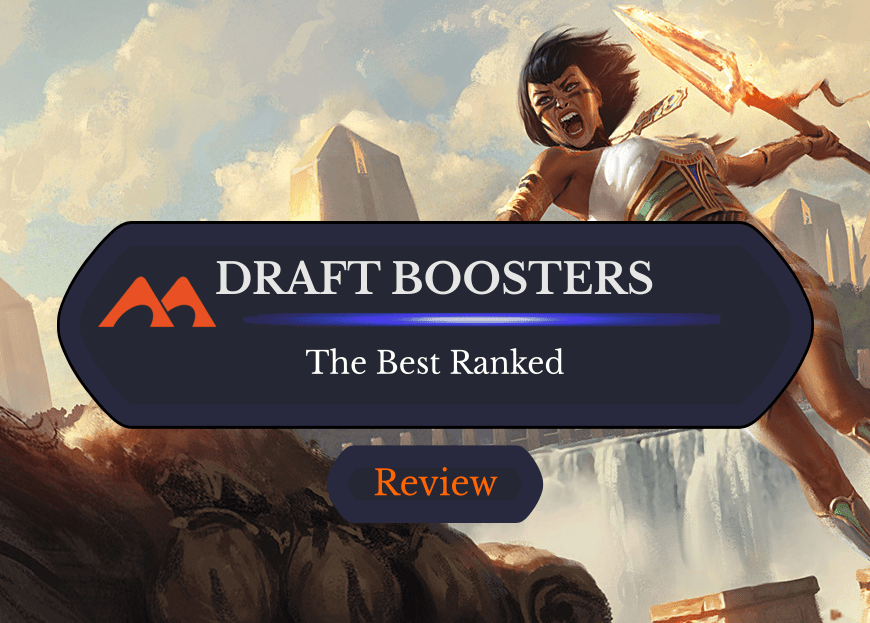
Add Comment